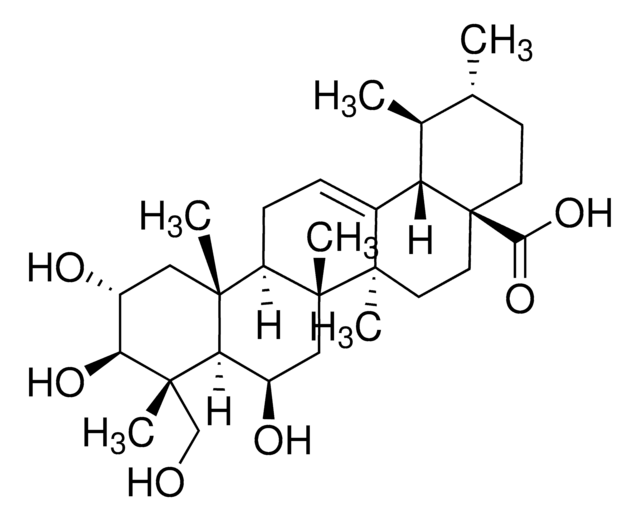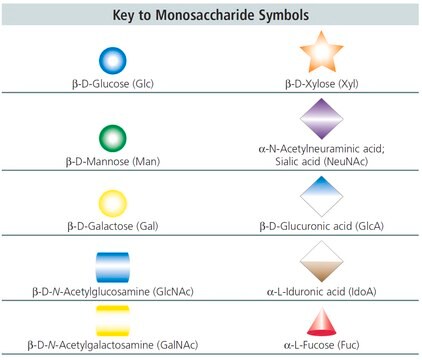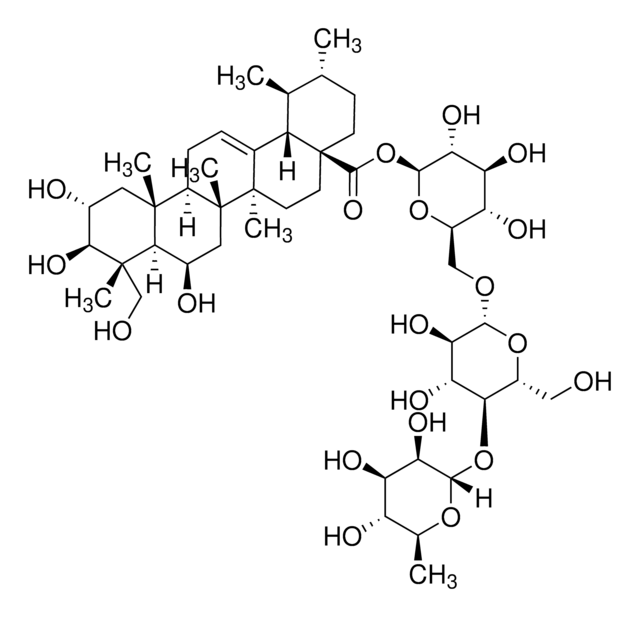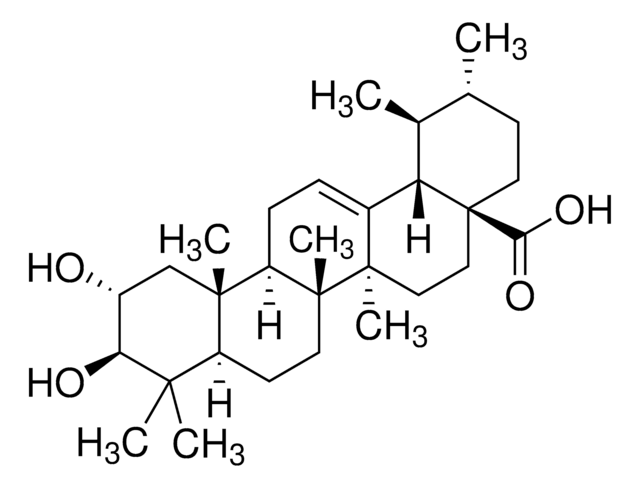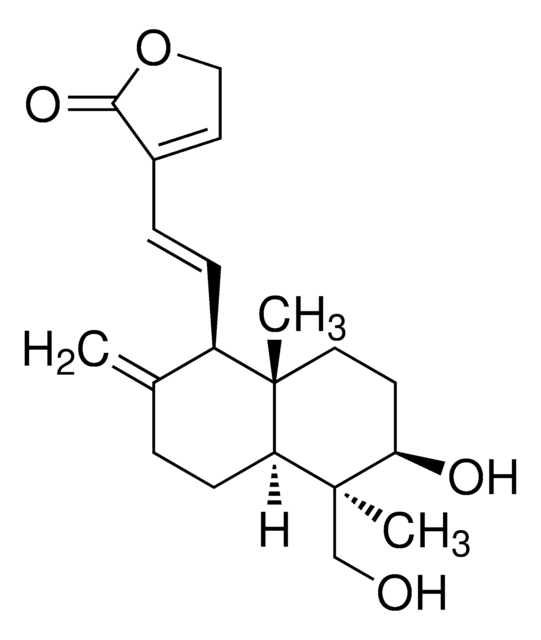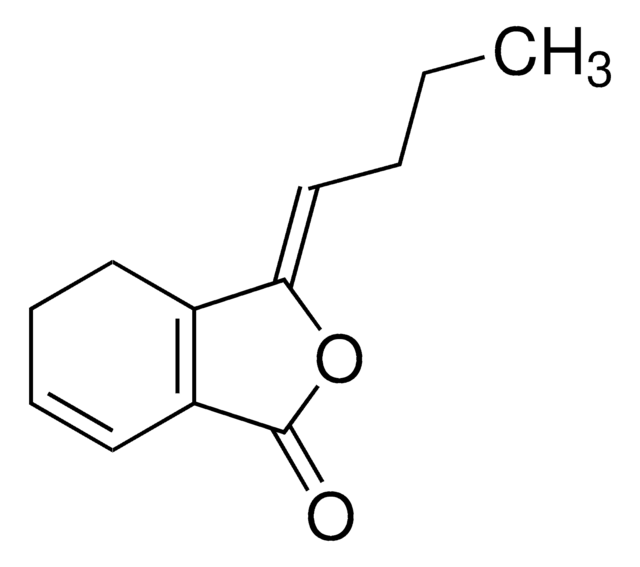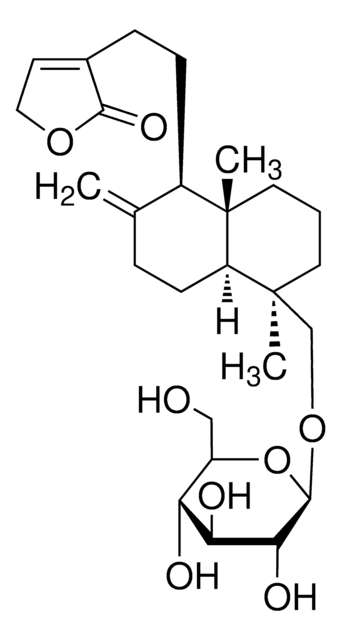M6949
Madecassoside from Centella asiatica
≥95% (HPLC)
Sinônimo(s):
Madecassoside, Asiaticoside A, Redermic
About This Item
Produtos recomendados
Nível de qualidade
Ensaio
≥95% (HPLC)
Formulário
powder
cor
white to off-white
solubilidade
H2O: 1 mg/mL, clear, colorless
aplicação(ões)
metabolomics
vitamins, nutraceuticals, and natural products
temperatura de armazenamento
2-8°C
cadeia de caracteres SMILES
O1C(C(C(C(C1C)O)O)O)OC2C(OC(C(C2O)O)OCC3OC(C(C(C3O)O)O)OC(=O)C54C(C(C(CC5)C)C)C6=CCC7C8(C(C(CC7(C6(CC4)C)C)O)C(C(C(C8)O)O)(CO)C)C)CO
InChI
1S/C48H78O20/c1-19-10-11-48(13-12-46(6)22(28(48)20(19)2)8-9-27-44(4)14-24(52)39(61)45(5,18-50)38(44)23(51)15-47(27,46)7)43(62)68-42-35(59)32(56)30(54)26(66-42)17-63-40-36(60)33(57)37(25(16-49)65-40)67-41-34(58)31(55)29(53)21(3)64-41/h8,19-21,23-42,49-61H,9-18H2,1-7H3
chave InChI
BNMGUJRJUUDLHW-UHFFFAOYSA-N
Procurando produtos similares? Visita Guia de comparação de produtos
Descrição geral
Aplicação
Ações bioquímicas/fisiológicas
Código de classe de armazenamento
11 - Combustible Solids
Classe de risco de água (WGK)
WGK 3
Ponto de fulgor (°F)
Not applicable
Ponto de fulgor (°C)
Not applicable
Escolha uma das versões mais recentes:
Já possui este produto?
Encontre a documentação dos produtos que você adquiriu recentemente na biblioteca de documentos.
Os clientes também visualizaram
Nossa equipe de cientistas tem experiência em todas as áreas de pesquisa, incluindo Life Sciences, ciência de materiais, síntese química, cromatografia, química analítica e muitas outras.
Entre em contato com a assistência técnica
